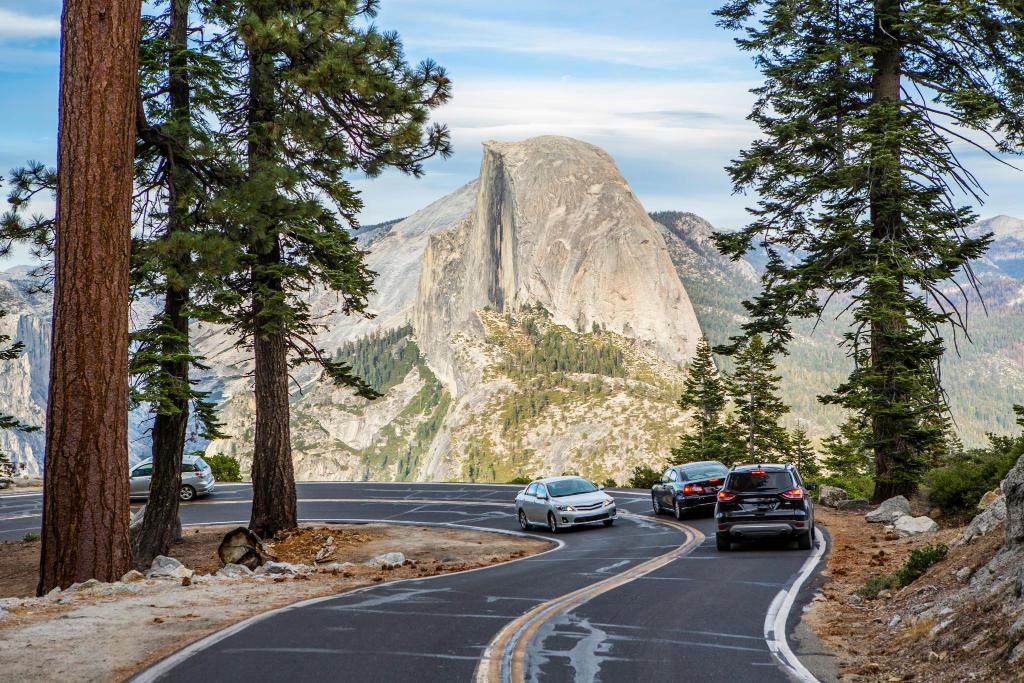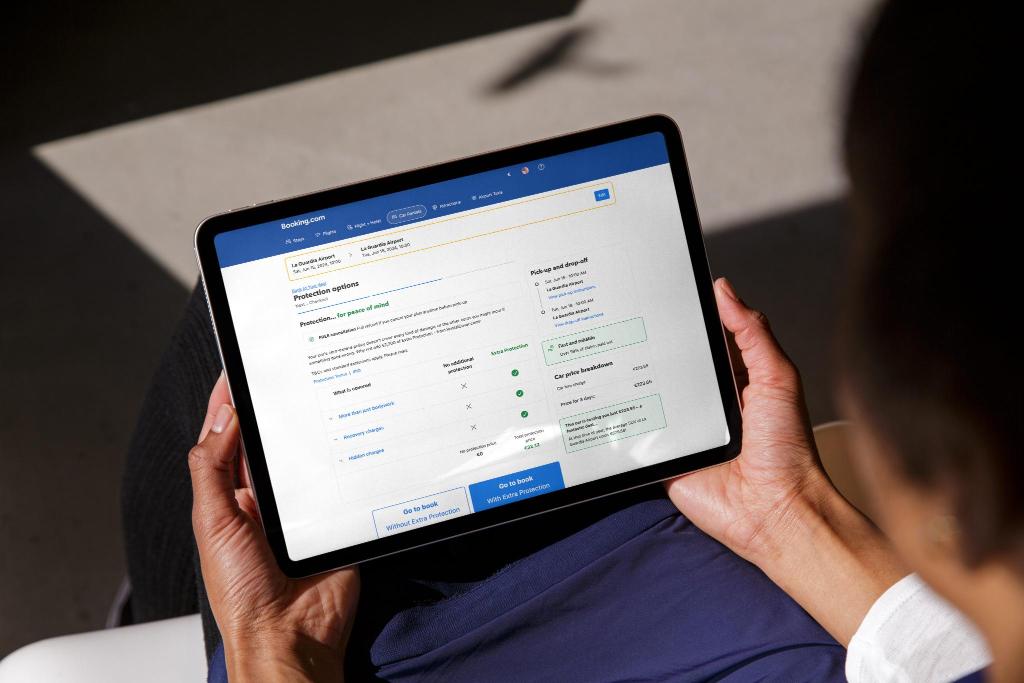
Your complete guide to car rental insurance
- In most countries, rental cars come with the standard trio of collision damage, theft and third-party coverage.
- If you have an American credit card, there’s a good chance it offers car rental insurance as an additional benefit.
- If you don’t have this option on your credit card, you can also purchase coverage from a third-party insurer which may provide a more wallet-friendly alternative.
When it comes to renting a car, deciding on what insurance you need can be fairly stressful. It’s important to understand what each type of coverage provides you with, as well as the additional options available to you. In most countries, rental cars come with the standard trio of collision damage, theft and third-party coverage.
Read this guide to delve into the details of the most common types of insurance and decide which ones are best for your rental experience.
Collision Damage Waiver

This comes as standard with most rental agreements, but it’s important to understand the finer points around what protection it actually gives you. A Collision Damage Waiver (CDW) will only cover damage to the car’s bodywork. So, if you damage other parts of the vehicle (like the windows, wheels or interior), you’ll need to pay for the repairs in full
As the name suggests, a Collision Damage Waiver allows the rental company to waive your liability for the total cost of the damages. The maximum you’ll pay is known as a ‘deductible’, which is normally between $650 (about €600) and $3,800 (about €3,500). This will usually be deducted from the deposit you left when you picked the car up. But if the damage occurs while you’re illegally parked, speeding or drunk driving, you’ll be in breach of your rental agreement and have to foot the entire bill.
Theft Protection

Another type of coverage which comes as standard with most rental agreements is Theft Protection. This guarantees that in case of car theft, you're responsible for the deductible only, not the full car value. It also protects you against any damage caused during an attempted theft.
Similar to the Collision Damage Waiver, there are specific situations in which the protection may not be applicable. For example, if you leave the keys in the ignition and the car is stolen, you’ll be liable for the whole amount. Make sure to carefully review the insurance policy to understand any scenarios when it won’t apply.
Third-party Liability (TPL)

Accidents do happen, so Third-party Liability insurance is there to cover you if someone makes a financial claim against you for their sustained injuries or property damage. As with most other forms of rental insurance, there’s usually a maximum amount of financial coverage which will vary depending on which country you rent in. As with Collision Damage Waivers and Theft Protection, you must not be in breach of your rental agreement at the time of the accident. Otherwise, you will be liable for the full amount of the claim made against you.
Buying rental car insurance from a third-party

If you have an American credit card, there’s a good chance it offers car rental insurance as an additional benefit. But it may not offer the same level of protection as the insurance provided by the rental company, so double-check this before purchasing. If you don’t have this option on your credit card, you can also purchase coverage from a third-party insurer which may provide a more wallet-friendly alternative to what the rental company offers.
Collision Damage Waiver and Theft Protection costs
Overall costs for Collision Damage Waivers and Theft Protection vary depending on the rental company you choose, as well as the location you’re driving in and the type of car you’re renting. In Europe, many rental packages include a Collision Damage Waiver, Theft Protection and Third-party Liability, but always check to see what the basic insurance includes.
In other instances, you may need to purchase these options separately as additional coverage. For the most accurate and up-to-date basic inclusions and costs, you should check with the rental company or third-party insurer directly.
Purchasing additional insurance
Depending on how confident you feel about driving in a particular location, you might want to buy some extra insurance for peace of mind. If you’re purchasing from a third-party insurer, be sure to check what’s already included. If you haven’t pre-purchased any additional coverage, it’s likely that counter staff will provide you with some options when you collect your rental car. Most of the options provide insurance for parts of the car not classified as bodywork, such as the windows, tires or engine. They also reduce the deductibles you pay if anything goes wrong.
Let’s take a look at some common types of additional insurance:
Super Collision Damage Waiver (SCDW)
As the name suggests, this is similar to a Collision Damage Waiver, but has one key difference – it waives all your financial liability for anything that’s covered. Although it costs more than a CDW, it can work out cheaper in the long run if you do end up having an accident in your rental car. SCDWs typically cover things like collision damage, theft protection and damage to the windows, windshield and tires.Personal Accident Insurance (PAI)
This insurance option covers expenses in case you have an accident and require medical assistance. For example, if you need ambulance transportation to the nearest hospital, a PAI will take care of this.Supplemental Liability Insurance (SLI)
Put simply, an SLI boosts the maximum payout on your Third-party Liability insurance. This is particularly helpful if you have an accident and the third-party injury or property damage fees are particularly high.Personal Effects Coverage (PEC)
Also known as Personal Belongings Insurance, this covers the loss of or damage to any of your personal belongings inside the rental car.Roadside Assistance
This is a useful option to have in case of breakdowns, flat tires or any other unexpected issues during your rental period.

- Adventure travel
- City breaks
 Can you move to an empty seat on a flight?August 5, 2025
Can you move to an empty seat on a flight?August 5, 2025 Understanding Car Rental AgreementsMarch 14, 2025
Understanding Car Rental AgreementsMarch 14, 2025 Safe Driving Tips For Hot WeatherFebruary 26, 2025
Safe Driving Tips For Hot WeatherFebruary 26, 2025 A Guide to Driving on the Right Side of the RoadFebruary 15, 2025
A Guide to Driving on the Right Side of the RoadFebruary 15, 2025 How to Find the Car Rental Counter at AirportsDecember 19, 2024
How to Find the Car Rental Counter at AirportsDecember 19, 2024 Your Guide to Booking, Picking Up and Returning a Rental CarDecember 17, 2024
Your Guide to Booking, Picking Up and Returning a Rental CarDecember 17, 2024 What Is The Best Fuel Policy For My Rental?December 13, 2024
What Is The Best Fuel Policy For My Rental?December 13, 2024 Assigning additional drivers to a rental carJune 28, 2024
Assigning additional drivers to a rental carJune 28, 2024 How to tell if your rental car needs diesel or gasJune 28, 2024
How to tell if your rental car needs diesel or gasJune 28, 2024
You might also like these
Lost rental car keys? Learn what to do next and how to manage the situation effectively to minimize stress and costs.
Do you have to clean a rental car? These tips will help you keep vehicles clean during your travels and avoid unexpected cleaning charges afterward.
Finding a car rental with unlimited miles is easier than you think. These expert tips will help you enjoy your trip without worrying about extra fees.
Not sure if you should rent a manual car? In this guide, we discuss how different transmissions can suit your preferences and your license.
Find the perfect family car rental for your next road trip. Choose a vehicle that offers comfort, space, and reliability with our guide.
Navigate US car rental requirements and learn everything you need to know to rent a car as an international traveler.








